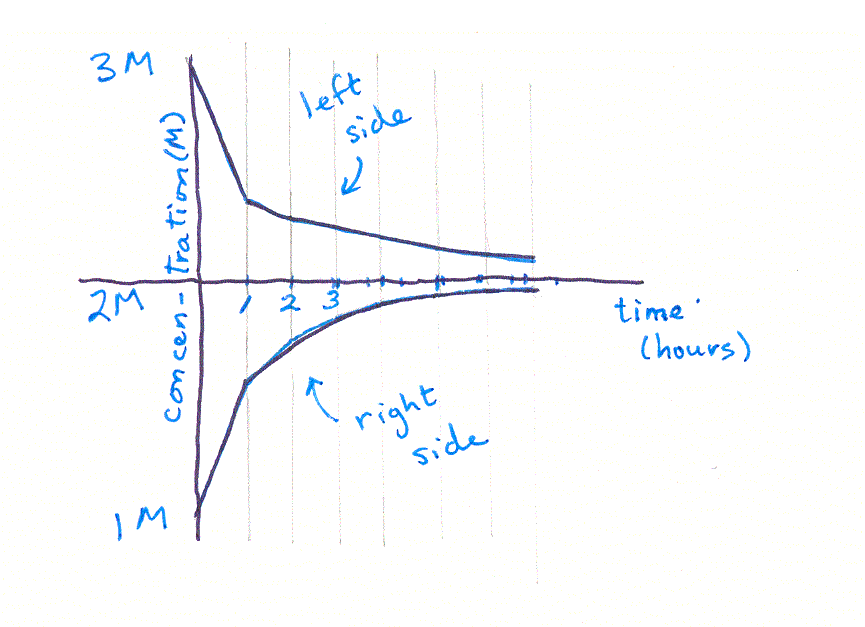Discrete Curves

When we use the discrete equation, how fast the particles move still depends on how different the compartments are, but (and this is the important part) we only calculate the concentrations every once in a while, maybe every hour (so Δt = 1 hour). Then we assume they continue to cross the membrane at that rate, for an entire hour. This gives us a straight line segment (like driving your car in a straight line because you're not adjusting the steering wheel) which is a little steeper than it would be in the continuous version of the graph (like heading into a sharp turn and not readjusting the steering wheel).
At t = 1 hour, we recalculate how many particles are on each side and how fast they will move across the membrane. Likewise at t = 2 hours. And t = 3 hours. And so on.
Notice that this curve looks "segmented" or jerky, especially when it is steep. Like the twisty road, when things are changing fast, the discrete equation will not approximate the path well.
Copyright University of Maryland, 2007
You may link to this site for educational purposes.
Please do not copy without permission
requests/questions/feedback email: mathbench@umd.edu